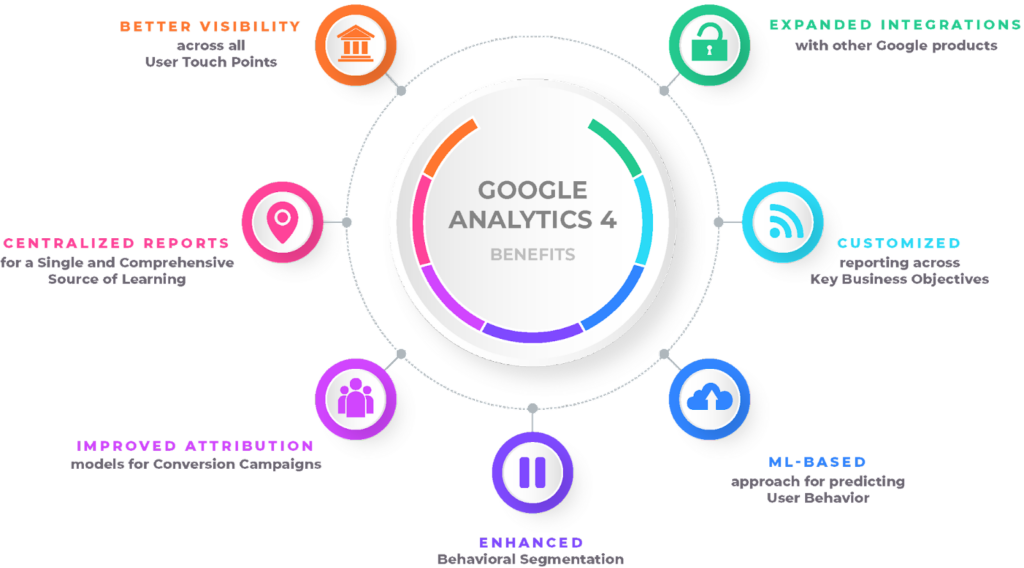Essential Insights on When Does the Google Analytics Tracking Code Send an Event Hit to Analytics for Accurate Coverage
Essential Insights on When Does the Google Analytics Tracking Code Send an Event Hit to Analytics for Accurate Coverage
Blog Article
Master Website Insights With Accurate Google Analytics Monitoring Code
The efficient application of Google Analytics hinges on the precise execution of its tracking code, a basic step commonly forgotten by internet site proprietors. What are the typical risks that could threaten your tracking initiatives, and how can you ensure accuracy in your method?
Recognizing Google Analytics Basics
Google Analytics is a vital device for web site owners and marketing experts, giving very useful understandings into customer behavior and internet site efficiency. At its core, Google Analytics accumulates data regarding site visitors to a website, allowing customers to analyze metrics such as website traffic sources, customer involvement, and conversion rates. Recognizing these fundamentals is important for optimizing a web site's efficiency and improving customer experience.
The platform uses cookies to track communications, recording data such as page sights, session durations, and bounce rates. This details is aggregated and provided with adjustable control panels, enabling users to envision trends in time. Secret performance indications (KPIs) can be checked, such as the total number of customers, brand-new versus returning visitors, and the geographic circulation of the target market.
Additionally, Google Analytics uses segmentation attributes, allowing users to separate details traffic sources or customer demographics for even more targeted evaluation. By mastering these fundamental aspects, website owners can make educated choices about web content strategy, marketing campaigns, and overall site improvements. Eventually, understanding Google Analytics fundamentals is vital for leveraging data to drive growth and achieve service purposes efficiently.
Establishing Your Tracking Code

Duplicate the supplied tracking code and paste it right into the HTML of your web site. This ensures that the tracking code lots before any type of various other content, enabling it to capture information precisely.
After installation, confirm that the tracking code is operating appropriately by making use of Google Tag Aide or the Real-Time reports in Google Analytics - when does the google analytics tracking code send an event hit to analytics?. This step is vital to validate that your information collection is active and exact, establishing the foundation for insightful analysis
Typical Monitoring Code Issues
Many web site proprietors come across typical issues with their Google Analytics tracking code that can prevent data collection and analysis. One prevalent problem is inappropriate installment. This may happen when the tracking code is placed in the incorrect area of the website's HTML, often causing missing or insufficient information. Furthermore, having several circumstances of the tracking code on a single web page can result in inflated metrics, as user communications could be counted greater than as soon as.
An additional problem arises from using ad blockers, which can prevent the monitoring code from implementing completely, thus skewing data. when does the read more google analytics tracking code send an event hit to analytics?. In addition, failing to configure filters correctly can lead to the exclusion of important web traffic sources or the incorporation of unwanted recommendation spam, distorting the data collected
Internet site proprietors may likewise ignore the value of monitoring code updates, specifically when moving to Google Analytics 4 (GA4) from Universal Analytics. Finally, inadequate testing prior to releasing changes can lead to unseen errors in the monitoring code, even more complicating information dependability. Dealing with these usual problems is vital for making sure accurate tracking and informative analytics.
Analyzing Site Information Effectively
Accurate data collection is only the initial step in leveraging Google Analytics; the actual worth hinges on successfully examining that information to drive enlightened decision-making. To achieve this, it is necessary to recognize essential performance indicators (KPIs) that straighten with your organization objectives. Focus on metrics such as conversion rates, customer engagement, and web traffic sources, as these will give insights into individual behavior and the general performance of your site.
Utilizing Google Analytics' segmentation attributes enables a much deeper understanding of your audience. By breaking down information right into details demographics, actions, and web traffic channels, you can uncover fads and patterns that notify targeted techniques. Executing custom records and control panels can enhance this process, enabling fast access to essential data.
Additionally, on a regular basis evaluating information patterns gradually helps to identify abnormalities and chances for renovation. Utilize visualization tools to present information in an easily absorbable layout, helping with much more efficient interaction with stakeholders. Eventually, the ability to analyze site information effectively encourages organizations to make critical decisions that boost customer experience, enhance advertising efforts, and drive development.

Best Practices for Accurate Monitoring
Applying effective monitoring techniques is important for getting reliable data in Google Analytics. More Help To make certain accurate monitoring, start by properly mounting the Google Analytics tracking code on every page of your website. This can be achieved with a tag manager or by straight installing the code right into the HTML.
Following, configure your Google Analytics account to exclude inner web traffic. This can be done by establishing up filters that determine and eliminate gos to from your company's IP address, therefore stopping manipulated data. Furthermore, utilize occasion monitoring to monitor certain individual interactions, such as downloads or video clip plays, which conventional web page sights might ignore.
Regularly investigate your monitoring setup to verify that all functions, such as goals and ecommerce tracking, are operating appropriately. Establish a consistent identifying convention for your campaigns and events to assist in less complicated coverage and evaluation.
Last but not least, take into consideration leveraging UTM parameters for campaigns to get insights right into the performance of different advertising and marketing efforts. By following these best methods, you can boost the precision of your information collection and analysis, ultimately leading to even more enlightened decision-making for your site.
Conclusion
Precise application of the Google Analytics tracking code is crucial for grasping web site insights. By making certain the tracking code is correctly positioned and on a regular basis investigated, web site proprietors can record essential customer communication data, therefore helping with the identification of crucial efficiency indications. Effective analysis of this information, integrated with adherence to best techniques, allows informed decision-making and the optimization of on the internet approaches. Ultimately, a durable monitoring framework enhances the ability to drive involvement and improve general internet Home Page site efficiency.

Insufficient screening before introducing adjustments can result in undetected mistakes in the monitoring code, better making complex data integrity.Applying efficient tracking methods is essential for acquiring dependable data in Google Analytics. By making certain the monitoring code is correctly put and frequently investigated, website proprietors can record essential individual communication data, hence promoting the recognition of essential performance indications.
Report this page